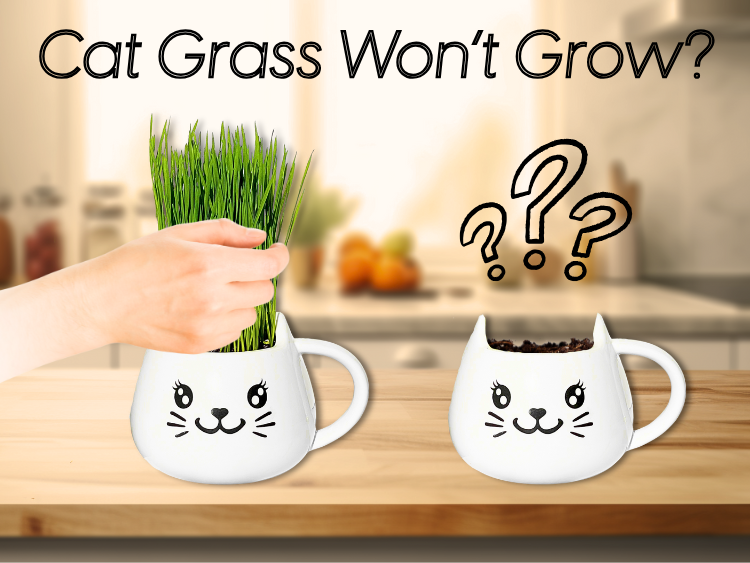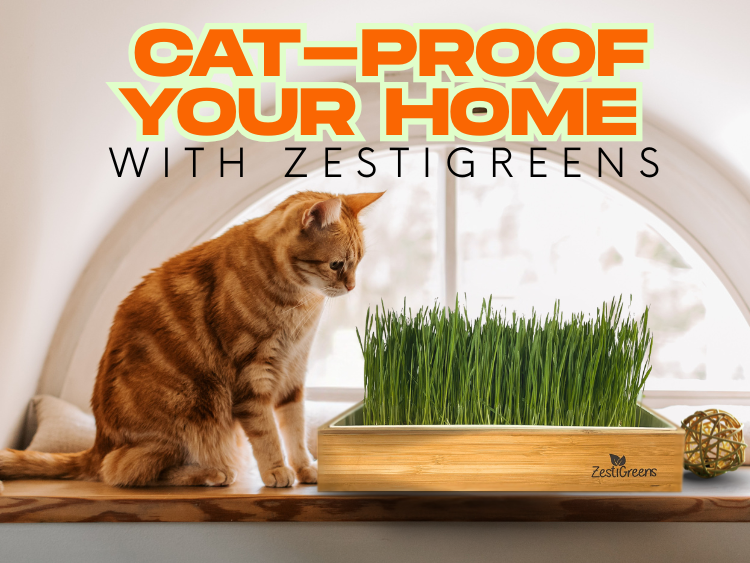Troubleshooting Tips: What to Do If Your Cat Grass Won’t Grow
So, you’ve planted your ZestiGreens cat grass seeds, followed the instructions, and waited patiently... but nothing’s sprouting? Don’t worry—you’re not alone.
Growing cat grass at home is simple, but even the most seasoned plant lovers run into hiccups. The good news? Most cat grass issues are easy to fix with just a few small adjustments.
Whether your grass isn’t sprouting, looks pale, or wilts too fast, this guide will walk you through common cat grass problems and how to get back on track.
1. Seeds Aren’t Sprouting?
Possible Causes:
- Old seeds: Seeds do lose viability over time. Always use fresh, high-quality seeds like those from ZestiGreens, which are tested for top germination rates.
- Too much or too little water: Seeds need moisture to germinate—but too much water can drown them or lead to mold. Your growing medium should be damp, not soggy.
- Poor air circulation: Seeds need oxygen to sprout. If they're too deep or covered in compacted soil, airflow is limited.
- Temperature issues: If it’s too cold (below 60°F or 15°C), your seeds might stay dormant.
Fix It:
- Soak your seeds for 6–8 hours before planting.
- Use a shallow tray and keep the soil evenly moist.
- Keep your tray in a warm, bright (but not directly sunny) spot.
- Avoid burying the seeds—just press them lightly into the soil surface.
2. Mold Appearing on the Soil
White, fuzzy mold is one of the most common concerns, especially in humid climates.
Causes:
- Overwatering or poor drainage
- Lack of ventilation
- Seeds packed too tightly
Fix It:
- Reduce watering—use a spray bottle to lightly mist instead of soaking.
- Improve airflow: use a fan nearby or keep the container partially uncovered during germination.
- Rinse seeds well before planting.
3. Grass Looks Weak or Pale
If your cat grass is spindly or yellowing, it may not be getting the energy it needs to thrive.
Causes:
- Not enough light
- Poor-quality soil or water
- Crowding of sprouts
Fix It:
- Move your tray to a brighter spot with indirect sunlight or use a grow light.
- Water with filtered or distilled water if your tap water is hard.
- Thin out sprouts if they’re overcrowded to allow for better airflow and light penetration.
4. Grass Wilts Quickly After Sprouting
Some cat parents notice their grass grows fine but wilts within days.
Causes:
- Root rot from overwatering
- Lack of nutrients in the soil
- Heat stress
Fix It:
- Drain excess water and avoid leaving the tray soaked.
- Use a high-quality organic potting mix or seed-starting soil.
- Keep the tray in a cool spot away from direct heat or sunlight.
5. Your Cat Isn’t Interested in the Grass?
Let’s say your grass grew perfectly—but your cat doesn’t seem excited.
Tips:
- Let the grass grow to 4–6 inches before offering it.
- Trim with scissors to keep it fresh and soft.
- Place it near your cat’s favorite lounging spot.
- Be patient—it may take a few tries for some cats to engage.
Why Choose ZestiGreens for Cat Grass?
At ZestiGreens, we’ve simplified the process of growing nutritious, pet-safe cat grass at home. Our premium seeds and easy-to-use grow kits are designed with both beginners and busy pet parents in mind. Plus, our helpful resources ensure you get the most out of your growing experience—even when things don’t go as planned.
Whether you're troubleshooting or just getting started, ZestiGreens is here to support your indoor garden journey with sustainable, reliable, and cat-approved products.
Start fresh with our complete cat grass grow kits, perfect for first-time growers and green-thumbed pet lovers alike. 👉 Shop Cat Grass Kits at ZestiGreens.com









